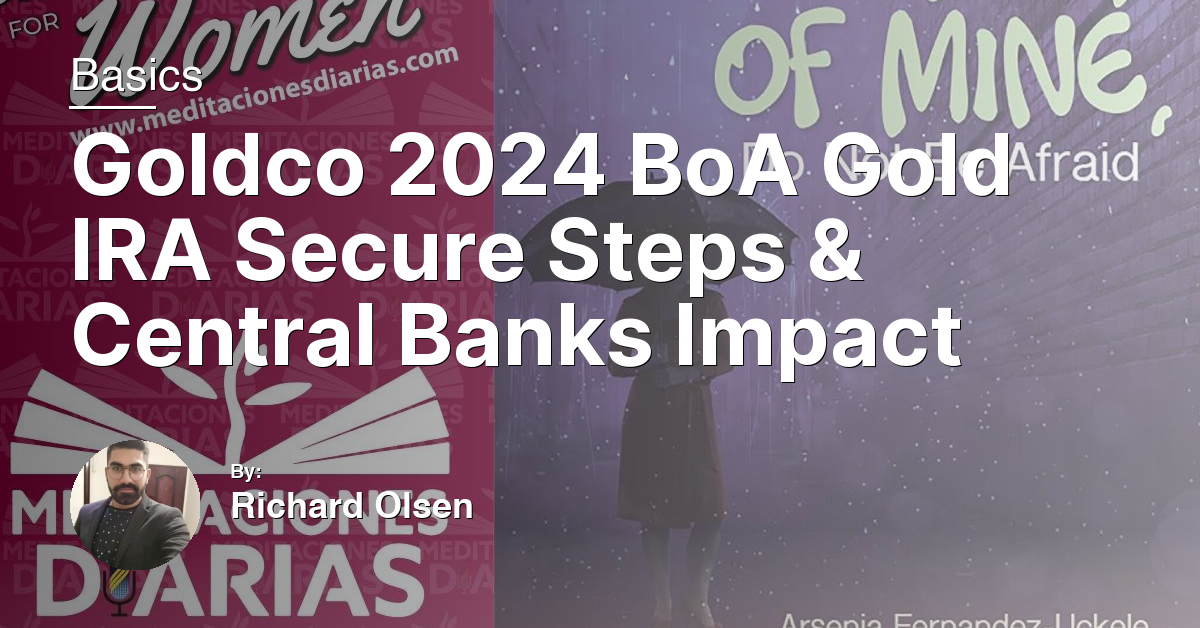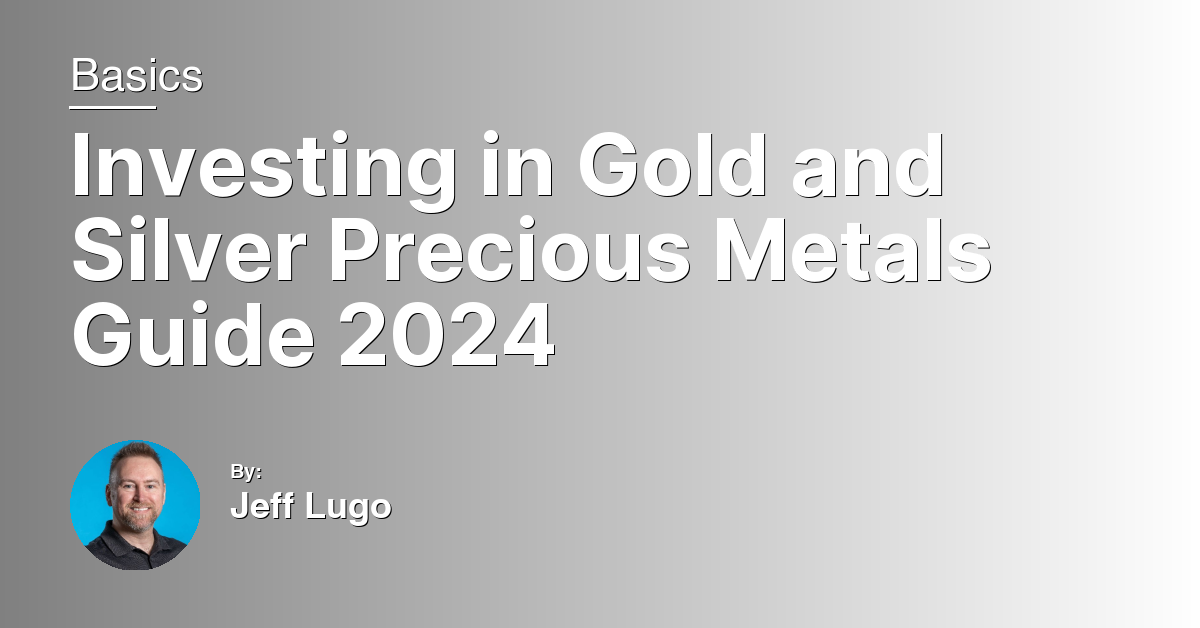In the ever-evolving landscape of retirement planning, diversifying your portfolio with precious metals like gold has emerged as a strategic move for many investors. The allure of a Gold IRA lies in its potential to offer stability and hedge against inflation. But before embarking on this golden investment journey in 2024, it’s crucial to understand the financial implications. This article demystifies the initial costs and ongoing fees associated with starting and maintaining a Gold IRA, providing you with a clear roadmap for incorporating this timeless asset into your retirement strategy.
Initial Investment Required for a Gold IRA
The initial investment required for a Gold IRA can vary widely, but typically, investors should be prepared to commit a minimum of $5,000 to $10,000. This upfront investment is necessary to cover the purchase of physical gold or other precious metals like silver, which are essential assets within a diversified retirement portfolio.
Choosing between coins or gold bars, investors have the flexibility to cater to their investment size and preferences. However, it’s crucial to consult with a financial adviser or tax advisor to understand the implications for your specific situation, including potential tax benefits or liabilities.
Fees are another critical consideration. Beyond the initial purchase, account setup, storage, and insurance fees, as well as seller’s markups, can impact the overall cost. These fees can vary significantly between providers, so thorough research and comparison are advisable before making a decision.
The Financial Benefits of Investing in a Gold IRA
Investing in a Gold IRA offers significant financial benefits, primarily through diversification of your portfolio. By including gold or other precious metals, you hedge against inflation and economic downturns, as these assets typically move inversely to paper investments like bonds and stocks.
With a Self-directed IRA, you gain the flexibility to invest in a variety of gold options, from coins to bars, enhancing your investment choices. Remember, the IRS has specific requirements for gold assets in an IRA, including purity and custody conditions, so consulting with a financial adviser or tax advisor is crucial.
Moreover, owning physical gold within a retirement account can offer privacy and a sense of security, knowing you have tangible assets. While there are costs involved, such as setup fees, storage fees, and possibly seller’s fees, the potential for asset appreciation and portfolio protection can outweigh these expenses.
Always consider the break-even point when factoring in these fees to ensure your investment grows over time, benefiting from gold’s stable value and hedging capabilities.
Understanding the Fees: Setup, Storage, and Transaction Costs
| Fee Type | Details |
|---|---|
| Setup Fee | A one-time fee charged by the custodian to establish your Gold IRA account. |
| Storage Fee | An annual fee for the secure storage of your gold assets in a depository. |
| Transaction Costs | Fees associated with buying, selling, or transferring gold assets within your Gold IRA. |
The Role of Gold IRAs in a Diversified Retirement Strategy
Incorporating a Gold IRA into your retirement strategy can significantly enhance portfolio diversification. Traditionally, retirement accounts focus on stocks, bonds, and mutual funds. However, a Gold IRA, a type of Self-directed IRA, allows investors to include gold and other precious metals in their retirement savings. This diversification can act as a hedge against inflation and economic downturns, providing a more stable investment vehicle.
Gold IRAs offer unique benefits, such as potential tax deductions and the privacy of ownership. With a Gold IRA, investors can hold physical assets like gold coins and bars, which are tangible and carry intrinsic value. This is crucial in scenarios where traditional financial systems might fluctuate significantly.
It’s essential to factor in the costs, which include setup fees, storage fees, and potential IRA custodian fees. While these can impact the break-even point of your investment, the long-term benefits of adding gold to your retirement portfolio often outweigh the initial expenses. Understanding the balance between these costs and the value of diversification is key to optimizing your retirement savings strategy.
Choosing the Right Custodian and Precious Metals for Your Gold IRA
When selecting precious metals, focus on gold coins and bars approved by the IRS for Gold IRAs. These include American Eagle coins, Canadian Maple Leaf coins, and gold bars that meet fineness standards. Diversification within your precious metals portfolio can also include silver, platinum, and palladium, enhancing your investment strategy’s resilience against economic fluctuations.
Strategies to Reduce Gold IRA Expenses
To reduce Gold IRA expenses, investors should first compare fees across different custodians. Look for companies offering competitive rates on setup fees, annual storage, and insurance costs. Opting for a custodian with a flat fee structure can be more economical than variable fees based on account value.
Consider the type of gold investments. Gold coins often have higher dealer premiums than gold bars. However, ensure any gold investment meets the purity requirements set by the Internal Revenue Service.
Bulk purchases can also lower costs. Buying larger quantities of gold or opting for a gold bar instead of multiple coins can reduce the price per ounce. This strategy leverages the economy of scale.
Lastly, understand the tax implications. Roth IRAs offer tax-free growth, potentially saving money in the long term. Be mindful of the tax benefits associated with your investment, as they can impact overall expenses and returns.
By applying these strategies, investors can effectively manage and minimize the costs associated with maintaining a Gold IRA.
Navigating IRA Regulations: Distributions and Prohibited Investments
When opting for a Gold IRA, understanding IRA regulations on distributions and prohibited investments is crucial. For distributions, the Internal Revenue Service (IRS) mandates that investors start taking Required Minimum Distributions (RMDs) at age 72 for traditional IRAs, including Gold IRAs. Failing to adhere to this rule can lead to hefty penalties.
On the investment front, the IRS bars certain precious metals and collectibles in IRAs. Specifically, gold investments must meet purity standards (99.5% for gold), and only certain coins and bullion are permissible. Non-compliant investments can lead to tax penalties and jeopardize the tax-advantaged status of your IRA.
Critical for investors is the fact that diversifying your portfolio with a Gold IRA can serve as a hedge against inflation and economic downturns.
Anticipating Changes in Gold IRA Fees and Expenses
Anticipating changes in Gold IRA fees and expenses is crucial for investors seeking to diversify their portfolios with gold as an investment. Fees can vary widely among providers and are influenced by several factors, including the size of your investment, the type of gold assets (e.g., gold coins or gold bars), and whether your account is a traditional or Roth IRA.
A key component to watch is the storage and insurance fees associated with physical gold. These can either be a flat rate or a percentage of your gold’s value, potentially impacting the overall cost as the price of gold fluctuates.
Moreover, setup fees, annual administrative fees, and selling fees can also affect your investment. It’s important to ask providers for a comprehensive list of all possible charges. A good rule of thumb is to compare these costs across multiple providers to ensure you’re getting a competitive rate.
Lastly, as the economy evolves, so do regulations and tax implications for precious metal IRAs, which could indirectly affect your expenses. Staying informed about these changes can help you make more strategic decisions regarding your gold IRA investment.
F.A.Q.
How much does it cost to open a gold IRA?
Opening a gold IRA can cost around $50 for account application fees charged by the custodian.
Are gold IRAs worth it?
Gold IRAs can be worth it for investors looking to diversify their retirement portfolio and hedge against inflation.
How do I start a gold IRA?
To start a gold IRA, you must first select a Gold IRA Company, open a Precious Metals IRA with a Self-Directed IRA Custodian, transfer funds from your current retirement account, decide on which precious metals to purchase, select an IRS-approved depository, and complete the transaction.

